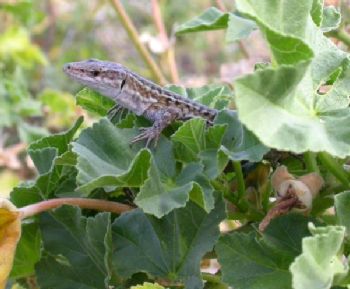Hermit
Archon
    
Posts: 4289
Reputation: 8.50
Rate Hermit

Prime example of a practically perfect person
 
|
 |
Evolutionary Fasttrack. Lizards Do the Quickstep
« on: 2008-04-20 23:30:40 » |
 |
Lizards Undergo Rapid Evolution After Introduction To A New Home
NB: Clearly when this article says "genetically identical" they mean that the DNA of the study population conforms to their being descendants of the breeding stock. Nobody who comprehends the implications of sexual reproduction would assert that offspring of this process could be "identical" to either parent.)
Source: Wild Biology
Authors: Not Credited
Credit: The story was adapted from a news release issued by the University Of Massachusetts, Amherst
Dated: (4/19/2008)
In 1971, biologists moved five adult pairs of Italian wall lizards from their home island of Pod Kopiste, in the South Adriatic Sea, to the neighboring island of Pod Mrcaru. Now, an international team of researchers has shown that introducing these small, green-backed lizards, Podarcis sicula, to a new environment caused them to undergo rapid and large-scale evolutionary changes.
"Striking differences in head size and shape, increased bite strength and the development of new structures in the lizard's digestive tracts were noted after only 36 years, which is an extremely short time scale," says Duncan Irschick, a professor of biology at the University of Massachusetts Amherst. "These physical changes have occurred side-by-side with dramatic changes in population density and social structure."
Researchers returned to the islands twice a year for three years, in the spring and summer of 2004, 2005 and 2006. Captured lizards were transported to a field laboratory and measured for snout-vent length, head dimensions and body mass. Tail clips taken for DNA analysis confirmed that the Pod Mrcaru lizards were genetically identical to the source population on Pod Kopiste.
Observed changes in head morphology were caused by adaptation to a different food source. According to Irschick, lizards on the barren island of Pod Kopiste were well-suited to catching mobile prey, feasting mainly on insects. Life on Pod Mrcaru, where they had never lived before, offered them an abundant supply of plant foods, including the leaves and stems from native shrubs. Analysis of the stomach contents of lizards on Pod Mrcaru showed that their diet included up to two-thirds plants, depending on the season, a large increase over the population of Pod Kopiste.
"As a result, individuals on Pod Mrcaru have heads that are longer, wider and taller than those on Pod Kopiste, which translates into a big increase in bite force," says Irschick. "Because plants are tough and fibrous, high bite forces allow the lizards to crop smaller pieces from plants, which can help them break down the indigestible cell walls."
Examination of the lizard's digestive tracts revealed something even more surprising. Eating more plants caused the development of new structures called cecal valves, designed to slow the passage of food by creating fermentation chambers in the gut, where microbes can break down the difficult to digest portion of plants. Cecal valves, which were found in hatchlings, juveniles and adults on Pod Mrcaru, have never been reported for this species, including the source population on Pod Kopiste.
"These structures actually occur in less than 1 percent of all known species of scaled reptiles," says Irschick. "Our data shows that evolution of novel structures can occur on extremely short time scales. Cecal valve evolution probably went hand-in-hand with a novel association between the lizards on Pod Mrcaru and microorganisms called nematodes that break down cellulose, which were found in their hindguts."
Change in diet also affected the population density and social structure of the Pod Mrcaru population. Because plants provide a larger and more predictable food supply, there were more lizards in a given area on Pod Mrcaru. Food was obtained through browsing rather than the active pursuit of prey, and the lizards had given up defending territories.
"What is unique about this finding is that rapid evolution can affect not only the structure and function of a species, but also influence behavioral ecology and natural history," says Irschick.
Results of the study were published March 25 in Proceedings of the National Academy of Sciences. This research was supported by the National Science Foundation and the Fund for Scientific Research in Flanders. Additional members of the research team include Anthony Herrel of Harvard University and the University of Antwerp, Kathleen Huyghe, Bieke Vanhooydonck, Thierry Backeljau and Raoul Van Damme of the University of Antwerp, Karin Breugelmans of the Royal Belgian Institute of Natural Sciences and Irena Grbac of the Croatian Natural History Museum.
| 
Pod Mrcaru lizard. Credit: Anthony Herrel (University of Antwerp) |
|




